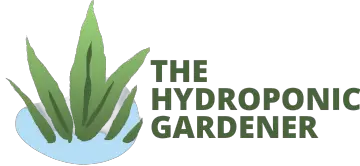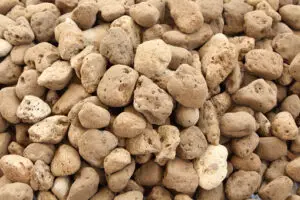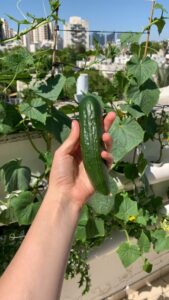Are you looking for the ideal rocks and stones in a hydroponic garden? Hydroponic gardening is an efficient way to grow plants in water, as it requires limited space and little extra effort and can provide tremendous results. Finding the right type of rock or stone to ensure optimal drainage and aeration within your system can be daunting.
This blog post will discuss the various types of rocks and stones available to add to a hydroponic system and how they help meet specific needs, such as providing drained areas for moving heavy objects and filling gaps between containers or structures.
We’ll also cover tips on finding locally since shipping may not be feasible given the weight of these materials, as well as explain why their features make them so invaluable in any well-functioning hydroponic garden setup.

Image credit:pixabay.com
What Is Hydroponic Rock (Any Why Use Them?)
Hydroponic rock is a specially designed substrate created for hydroponics, a method of growing plants and vegetables without soil. Hydroponic rock was developed to reduce the need for soil and its associated drawbacks. The benefits of the rock are many, including reduced runoff from the container, better pH control, minimal maintenance requirements, and minimized oxygen depletion.
Rock provides more than just a steady flow of nutrients to the plant roots. It also encourages greater aeration in the root zone, leading to healthier, more vigorous plants with longer growth cycles. The increased aeration helps to oxygenate the root zone and prevents anaerobic bacteria from forming. This reduced level of anaerobic bacteria means that fewer and fewer harmful pollutants are released into the environment.
Types Of Aggregates Used In Hydroponic Systems
Regarding types of aggregates used in hydroponic Systems, rocks, and stones can be a great choice. Among the most popular aggregates are peat, vermiculite, and polystyrene.
Peat is an ideal choice for hydroponic gardening. It is made from living plants soaked in water and compressed into clay pellets or chunks. This material has a high moisture retention rate and helps to create structure within the growing medium.
Vermiculite is a sponge that can absorb water and re-release it as needed. This makes it an excellent hydroponic aggregate. Since it always supplies enough water while keeping the level consistent in the growing media bed.
Polystyrene, while less popular among home hydroponic growers due to its cost and environmental concerns. It is increasingly used in commercial systems because of its unique properties. Polystyrene is a lightweight and highly durable material made of tiny foam beads that can be formed into various shapes and sizes.
This makes it ideal for creating durable and lightweight structures within the hydroponic system. Ultimately each aggregate has different benefits, which you should consider before choosing one for your system.
Stones
Stones can be a great addition to hydroponics systems because they are porous, absorbent, and have a large surface area. Stones typically found in hydroponic systems are usually clay pebbles or volcanic rocks.
Clay pebbles are an ideal substrate choice for hydroponic gardening, thanks to their high rate of water absorption and ability to provide oxygen to plants. The high water absorption rate allows the plants to draw moisture from the clay pebbles quickly and easily while maintaining a healthy balance of air and nutrients in the root zone.
Stones also help with drainage and provide a stable platform for the roots of hydroponic plants. They allow the roots to get out into the air, stimulating their growth. While providing the plant access to oxygen, minerals, and nutrients. Provide additional advantages, including insulation against temperature swings: their high heat capacity helps keep root zone temperatures more constant and prevent overheating or excessive cooling, which could damage your crops. Stones also come with some disadvantages. They can accumulate dissolved minerals causing salt buildup near the bottom of the pots and being difficult to store and move due to their weight. However, stones remain an integral part of most hydroponics systems despite this.
Aquarium Gravel
Aquarium Gravel is a great choice for hydroponics, especially since it is readily available and easy to source. They come in two types: “sharp” gravel, which has angular fragments and comes in sizes from 0.1mm to 4mm, and “pea” gravel, which has rounded fragments around 3-9 mm.
Aquarium gravel can be used just like other rocks or stones suitable for hydroponics. It doesn’t add any undesirable elements to the soil mix, provides good aeration and drainage, and helps maintain good humidity levels and, therefore, relative temperature stability. It can support root structures easier than smoother materials would while allowing adequate light penetration when exposed to top-lighting systems.
They also offer some pros and cons to consider: the sharpness of the material doesn’t allow for nutrient buildup but may rub delicate roots too harshly; pea gravel, however, offers much better cushioning in comparison but may be prone to clogging the irrigation system if not properly sieved or washed first. Aquarium gravel is a great choice for hydroponics if one chooses carefully!
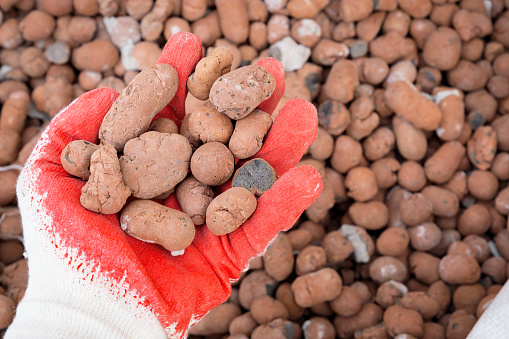
Image credit:pixabay.com
Pea Gravel
Pea Gravel is one of the most popular and beneficial rocks and stones for hydroponic gardening. They serve a dual purpose. It’s used as a medium to help nutrients and oxygen filter through plant roots while also helping to support the plant’s root systems.
It has numerous advantages when it comes to growing hydroponically, including improving the growth rate of plants, providing greater oxygen delivery to the roots, and providing better water drainage and aeration of the medium.
Pea Gravel’s size makes it an ideal option for larger plants where other small-sized pebbles don’t offer sufficient support. It offers an incentive for gardeners looking to cultivate leafy vegetables, which can help grow them large and strong.
While Pea Gravel allows for an efficient transfer of nutrients among plant roots. The only downfall is that it can be difficult to clean once minerals have been absorbed into its nooks and crannies. It is a great option for hydroponic gardens, allowing the growing of great vegetables with maximum nutrition.
Lava Rock
Lava Rock is becoming an increasingly popular option as a substrate for hydroponic gardens. It’s extremely porous, so it helps improve your plants’ growing environment by retaining water and nutrients that would otherwise be lost.
Lava rock is completely organic, doesn’t release nasty toxins, and has a very neutral pH which is ideal for hydroponically grown produce. Lava rock also has some natural properties that help keep temperatures more stable in hot weather, so your plants can continue flourishing even in the most extreme environments.
That said, Lava Rock has some cons: it will cost significantly more than other substrates because of its rarity and transportation costs. It has been known to crack despite its durability when used incorrectly or placed under certain conditions.
How To Wash Aggregates Before Use? (And Why Washing Them)
When considering using aggregates like rocks and stones for hydroponics, it is important to consider washing aggregates before use. A basic approach to this would be to create a simple soaking solution composed of 3% hydrogen peroxide.
soaking pebbles with 3% hydrogen peroxide provides numerous pros in sanitizing aggregates, helping maintain nutrient levels, and accelerating root growth.
This solution will safely and effectively disinfect your chosen aggregate without the need for scrubbing or other additional physical cleaning methods, as well as acting as a sterilizing agent good at eliminating most pathogens.
With this, you can expect the cons associated with using aggregates, such as dirt build-up and the possibility of nutrient depletion being all but eliminated. On top of that, hydrogen peroxide’s oxygenating properties increase root growth during cultivation and help maintain optimal nutrient amounts within soilless systems.
FAQ
Yes, but with caution. Using stones for your hydroponic system can offer several benefits, such as retaining moisture more effectively and providing more aeration for roots than soil.
However, you will want to ensure that you use clean, natural stones free of dust and contaminants that could negatively impact your system. Additionally, it’s also important to ensure that any rocks you put in your hydroponic reservoir are non-toxic, as they could potentially leach harmful chemicals into the water or clog up your system’s filters.
Ultimately, while crushed stone or gravel could be an effective choice for certain applications when building a hydroponic garden, it is best to consult a professional beforehand. Hence, you know exactly how the rocks may interact with your system.
Hydroponics is a great way to grow plants without soil, and selecting the right stones and rocks for your hydroponic system is important. Lava rocks are particularly good for hydroponics because they are lightweight and porous.
The nooks and crannies of these rocks make them ideal for trapping water and air- which your plants will thrive on. Rockwool is another good option, made from molten volcanic rock spun into long, fluffy fibers similar to fiberglass.
Yes. Lava rock, river rock, pea gravel, and other small stones are all commonly used in hydroponics systems for plant growth. You can also combine – using rocks and other materials such as coco coir, perlite, or vermiculite. These filler materials create more evenly distributed moisture and root structure development on the plant.
Yes. Gravel is one of the best fairly low-cost options for hydroponic systems. It’s cheap, easy to find, supplies air to the root systems, and doesn’t retain water.
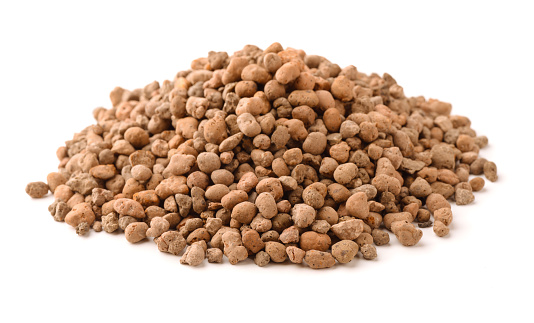
Image credit:pixabay.com
Conclusion
When it comes to growing plants using hydroponics, the type of rock and stone used in the system is an important factor to consider. The rocks and stones must be properly cleaned and are free of chemicals, as these can affect the growth of your plants. Different rocks and stones are appropriate for different plants, so research is important to ensure you choose the right ones. Rocks and stones with high porosity are ideal for hydroponic gardening as they absorb water more quickly, helping ensure that your plants stay adequately hydrated.
Some good options include lava rock, granite, and limestone. You should also ensure that the rocks are small enough to fit into your system without blocking the water flow. If you have questions about which rocks or stones would be best for your hydroponic system, feel free to ask a professional at your local garden center.
